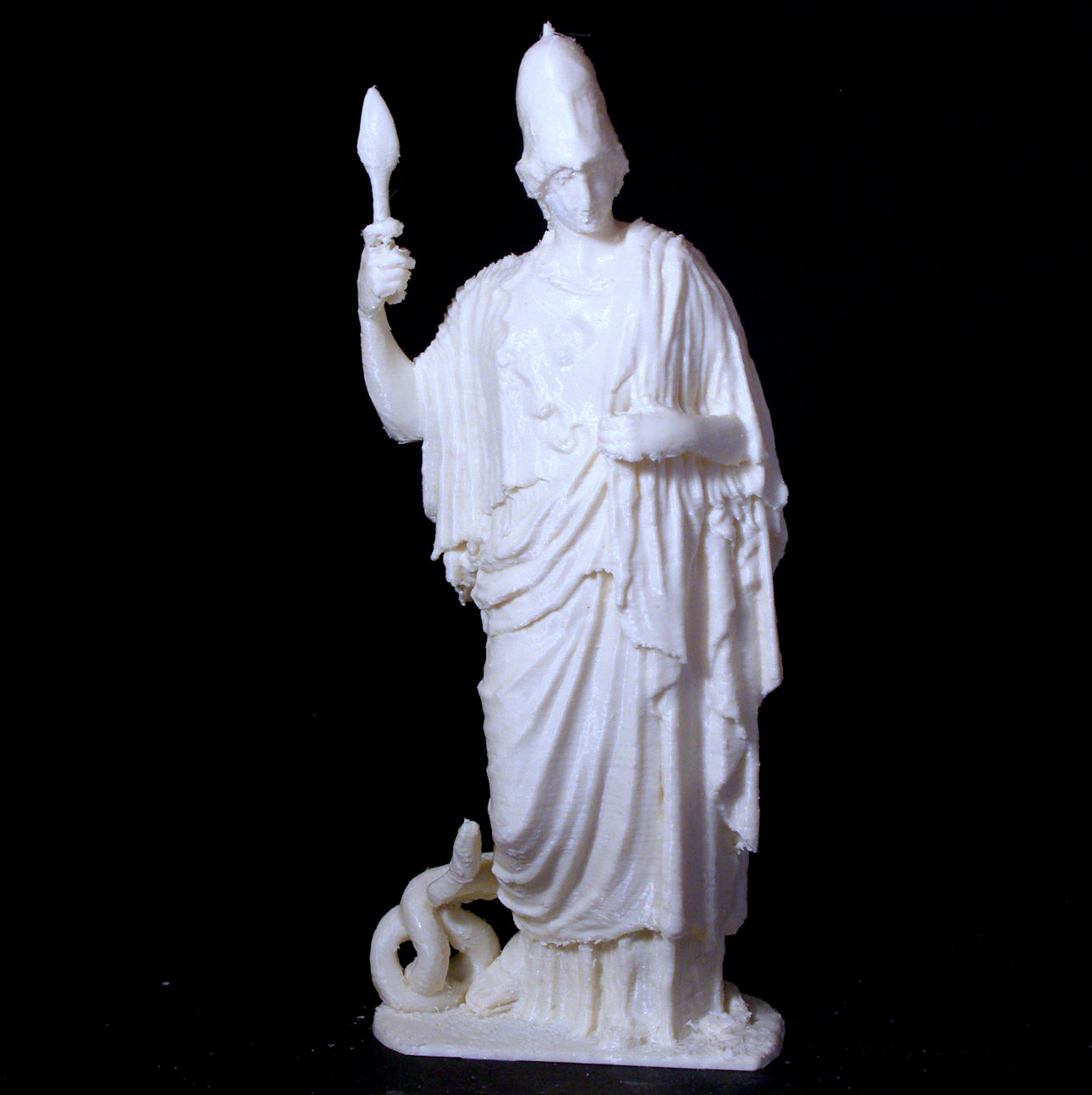
Giustiniani Minerva
myminifactory
Minerva Athena is associated with Athens because she presided over her sisterhood in earliest times, where the city was named after her. Mycenae, on the other hand, was a place where the Goddess was called Mykene, and Mycenae took its name from the females who tended her there. At Thebes, she was known as Thebe, and the city again took a plural form for the sisterhood of females who cared for her there. Similarly, at Athens, she was called Athena, and the city Athenae (or Athens) also took a plural form. Athena had a special relationship with Athens, which is shown by the connection between the names of the goddess and the city. According to myth, she competed with Poseidon and won by creating the olive tree; the Athenians accepted her gift and named the city after her. In history, the citizens of Athens built a statue of Athena as a temple to the goddess, which had piercing eyes, a helmet on her head, attired with an aegis or cuirass, and an extremely long spear. It also had a crystal shield with the Gorgon's head on it. A large snake accompanied her, and she held Nike in her hand. In a Mycenean fresco, there is a composition of two women extending their hands towards a central figure who was covered by an enormous figure-eight shield. This depiction could represent the war-goddess with her palladium or her palladium in an aniconic representation. Therefore, Mylonas believes that Athena was created during the Mycenaean era. On the other hand, Nilsson claims that she was the goddess of the palace who protected the king, and that the origin of Athena was the Minoan domestic snake-goddess. In the so-called Procession-fresco in Knossos, which was reconstructed by the Mycenaeans, two rows of figures carrying vessels seem to meet in front of a central figure, which is probably the Minoan palace goddess "Atano". Who is depicted? Athena (/əˈθiːnə/; Attic Greek: Ἀθηνᾶ, Athēnā, or Ἀθηναία, Athēnaia; Epic: Ἀθηναίη, Athēnaiē; Doric: Ἀθάνα, Athānā) or Athene (/əˈθiːniː/; Ionic: Ἀθήνη, Athēnē), often given the epithet Pallas (/ˈpæləs/; Παλλὰς), is the goddess of wisdom, craft, and war in ancient Greek mythology. Minerva is the Roman goddess identified with Athena. Athena is known for her calm temperament, as she moves slowly to anger. She is noted to have only fought for just reasons, and would not fight without a purpose. Athena is portrayed as an astute companion of heroes and is the patron goddess of heroic endeavour. She is the virgin patroness of Athens. The Athenians founded the Parthenon on the Acropolis of her namesake city, Athens (Athena Parthenos), in her honour. Veneration of Athena was so persistent that archaic myths about her were recast to adapt to cultural changes. In her role as a protector of the city (polis), many people throughout the Greek world worshipped Athena as Athena Polias (Ἀθηνᾶ Πολιάς "Athena of the city"). While the city of Athens and the goddess Athena essentially bear the same name, it is not known which of the two words is derived from the other.
With this file you will be able to print Giustiniani Minerva with your 3D printer. Click on the button and save the file on your computer to work, edit or customize your design. You can also find more 3D designs for printers on Giustiniani Minerva.
